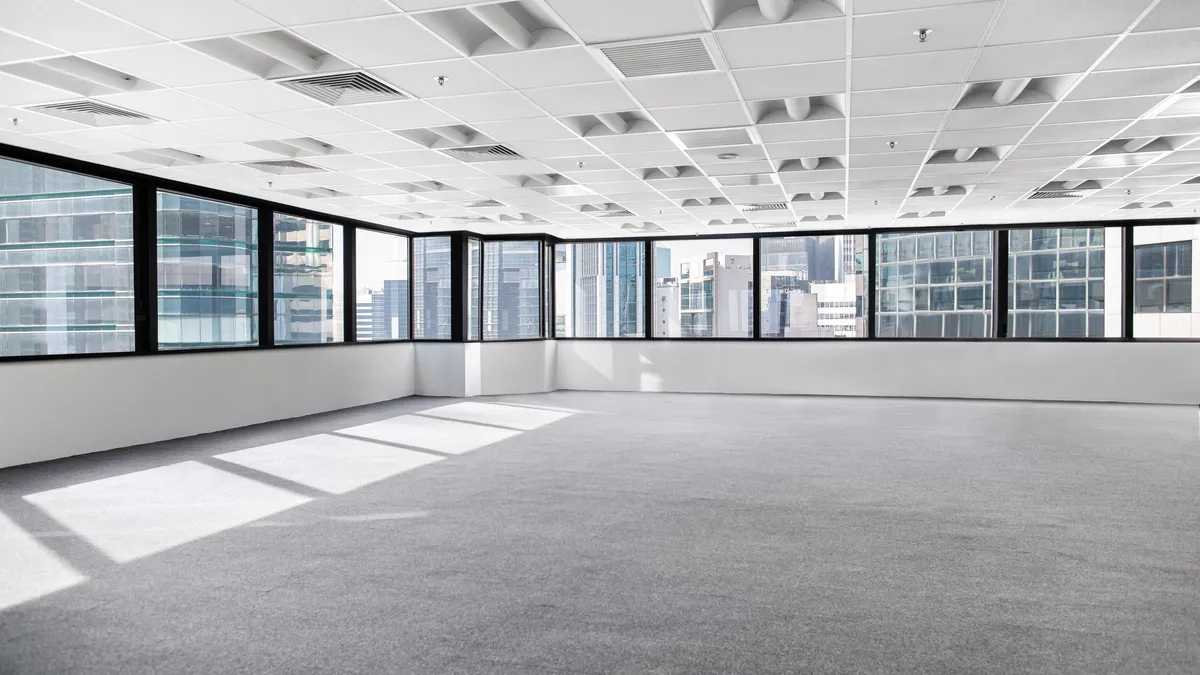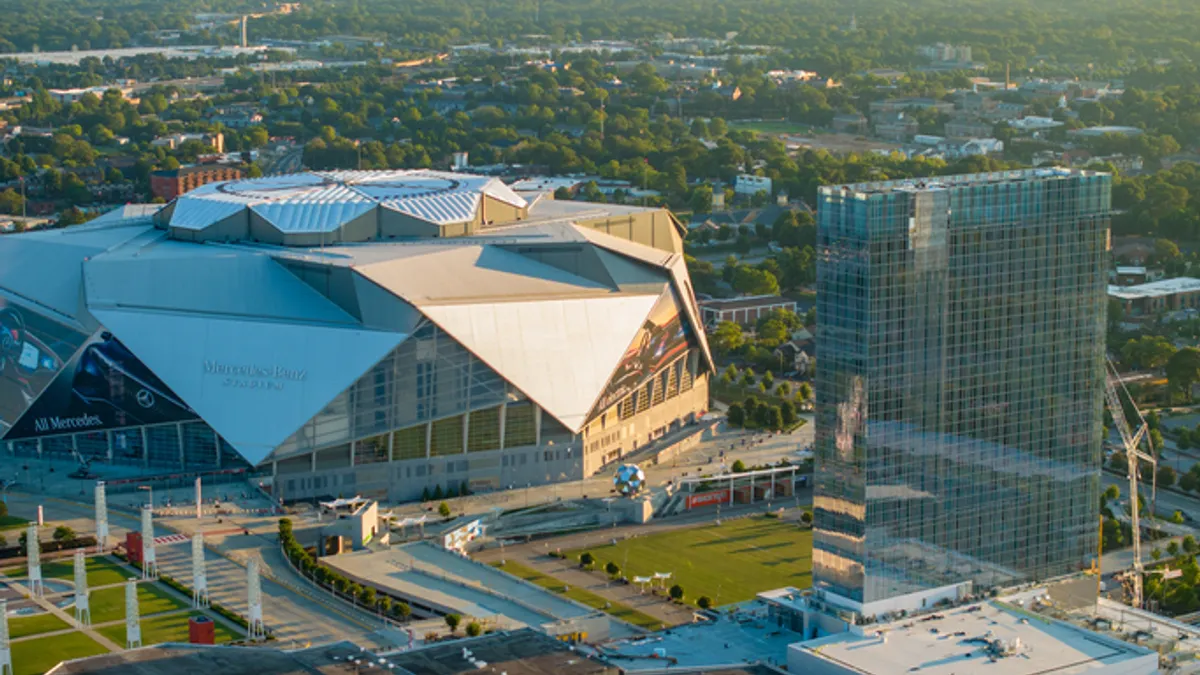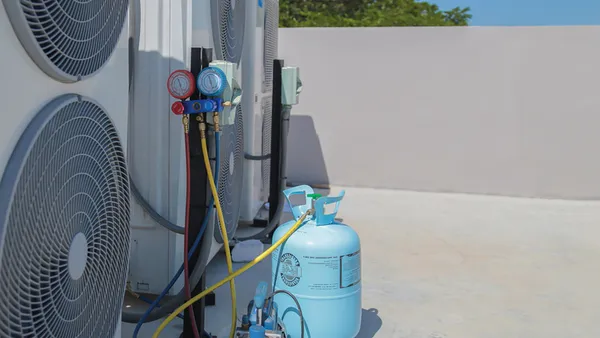Dive Brief:
- The U.S. office sector hit a record vacancy rate of 20.1% in the second quarter, breaking the 20% barrier for the first time in history, according to Moody’s Analytics analysis released July 2.
- In the previous quarter, that vacancy rate was 19.8%, with a “slow bleed” occurring in the office sector due to a permanent shift in working behavior that has led to a steady rise in vacancy rates. The quarterly increase represents the third straight record-breaking quarter beyond previous historic peaks of 19.3%, set in 1986 and 1991, Moody’s says.
- Effective rents fell 0.1% in the second quarter, however, as tenants sought more concessions “though asking rents grew 0.3%, representing the largest growth over the last year,” per the analysis.
Dive Insight:
The rising vacancy rate highlights the office sector’s struggles, with “natural concern over how high the rate will continue to climb,” Moody’s says. While the record vacancy rate is benefiting from strong employment figures, with unemployment at 4% and gross domestic product growth at roughly pre-pandemic levels, the future direction and speed of the rate “will hinge on the Federal Reserve’s navigation of the soft landing,” per the analysis.
Unlike previous peaks caused by macroeconomic uncertainty, the current turbulence in the office sector is occurring as the market approaches a state of near-equilibrium in working models four years after the inflection point of the COVID-19 pandemic, Moody’s notes.
Moody’s found that while office vacancies skyrocketed in many tech-focused U.S. metros since the pandemic, most of the rise in vacancy during the second quarter came from “distributed, small points of pain.” This includes a 2.8% increase in Louisville, Kentucky; a 1.9% increase in Kansas City, Missouri; and 1.7% increases in Columbus, Ohio, San Jose, California and Greensboro/Winston-Salem, North Carolina. These regions led the nation in office vacancy rate increases in the first quarter of 2024, Moody’s says.
Across the country, 50 of the 79 tier-1 metros observed vacancy increases, equivalent to 63%, compared with 48% in the previous quarter, Moody’s says. More sizable metro areas with larger inventories also saw moderate vacancy growth, driving the national average upwards. Five metros with at least 50 million square feet of inventory saw vacancy rates increase by 100 basis points or more in the second quarter, including a 1.5% growth in Pittsburgh, 1.4% increase in Phoenix, 1.2% jump in Denver and a 1% increase in both San Francisco and Chicago.
Albuquerque, New Mexico, was the nation’s leading office performer in the first quarter of 2024 with a vacancy decline of 2.1%. The city finished second in effective rent growth at 1.5%, the analysis says. Lexington, Kentucky, and Wichita, Kansas, were the only other metros with declining vacancy rates of 100 basis points or more, according to Moody’s.
As key economic indicators point to the moderation of economic activities in the second quarter, the main performance metrics across multifamily, retail and industrial sectors moved little at the national level, Moody’s says, noting that “headwinds and metro nuances remained” beneath the surface.
The authors say it is “especially important” to watch how commercial activities group together as demographics and population trends change, consumer finances tighten, and spending and inventory management shift accordingly. The analysis notes that it is also critical to monitor the normalization of return-to-office and office space strategies, particularly in the case of technological firms which expanded aggressively during the “prime time” of return to office, and now provide more flexible RTO policies than others.
The office sector’s evolution is not over, the authors write, with interest rate trajectory “remaining the focal point for the remainder of 2024, but emerging clarity on the timing of rate cuts and the equilibrium rate warm up transactions and the lending market.”













